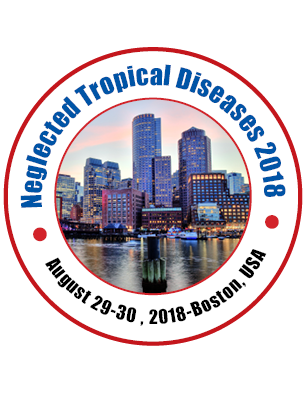
Gustave Simo
University of Dschang, Cameroon
Title: Cetyl trimethyl ammonium bromide (CTAB) based method for extracting DNA from stools: epidemiological implications for the control and surveillance of soil transmitted helminthes
Biography
Biography: Gustave Simo
Abstract
Soil-transmitted helminthiases (STH) belong to neglected tropical diseases affecting billion of people. Preventive chemotherapy reduced STHs incidence and led to their inclusion into WHO roadmap for elimination. In such a context where large-scale epidemiological studies are required to validate and monitor the elimination, no reliable diagnostic test is available. Efforts on molecular diagnostic of STHs were limited by the use of commercial kits which do not favor large-scale studies. In this light, four DNA extraction methods were tested on stools infected by Ascaris lumbricoides and their performance was evaluated by amplifying A. lumbricoides DNA. Stools were analyzed in triplicate by Kato-Katz and flotation techniques. Aliquots of 10, 20, 40 and 80 milligrams of infected stools were made and Zymo Quick-DNA kit, chelex, thaw-boiled and CTAB extraction methods enabled to extract DNA from these aliquots. Specific primers were used to amplify A. lumbricoides DNA. Of the 316 stools collected, the flotation technique revealed ten (3.2%) with A. lumbricoides. No infection was identified by Kato-Katz. Of the 10 infected stools, no amplification was observed for extracts coming from chelex and thaw-boiling methods. All extracts from the CTAB method and zymo Quick-DNA kit revealed A. lumbricoides whatever the amount of stool tested. In remote clinical laboratories, the flotation technique is appropriate for the identification of STHs in the current elimination context. The CTAB based method is appropriate to extract DNA from stools. It requires the little amount of stool and its low cost could favor large-scale epidemiological studies.

